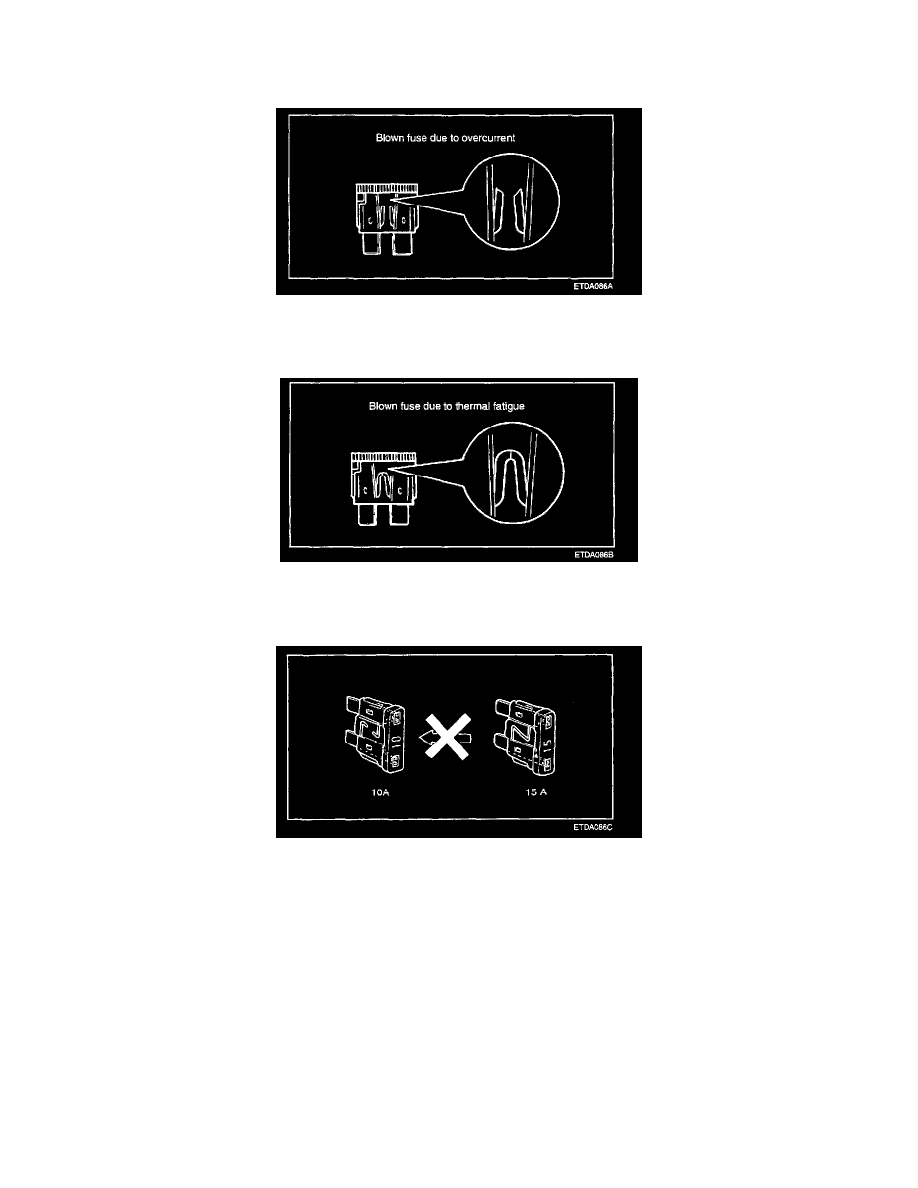Elantra GLS Sedan L4-2.0L (1999)

Fusible Link: Testing and Inspection
When a fuse is blown, there are two probable causes as follows. Which of the two causes is responsible can be easily determined by visual check after
removing the fuses.
1. Fuse blown due to over-current.
Prior to replacing the fuse with a new one, check the circuit for a short and the related parts for abnormal condition. Only after the correction of a
short or replacement of abnormal parts, should a fuse with same ampere rating be installed.
2. Fuse blown due to repeated current on-off.
Normally, this type of problem occurs after fairly long period of use and hence is less frequent than the above type. In this case, you may simply
replace with a new fuse of the same capacity.
CAUTION: A blade type fuse is identified by the numbered value in amperes. If the fuse is burnt-out, be sure to replace a fuse with the same
ampere rating. If a fuse of higher capacity than specified is used, parts may be damaged and the danger of fire also exists. To remove or insert a
fuse, please use the fuse puller in the fuse box.
INSPECTION
